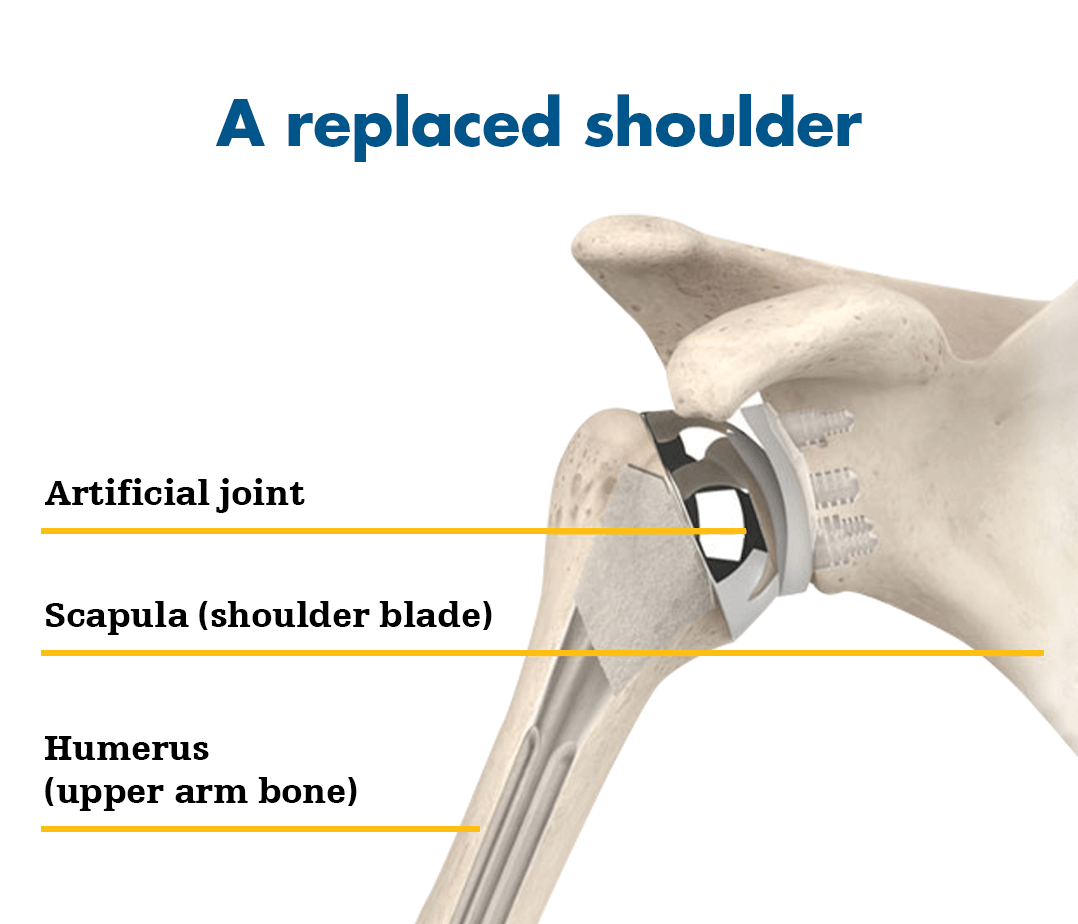Shoulder replacement
Anatomic total shoulder joint replacement is intended for use in individuals with painful, disabling joint disease of the shoulder resulting from: degenerative arthritis, rheumatoid arthritis or post-traumatic arthritis. Additional indications could include but not limited to: aseptic necrosis of the humeral head, proximal humeral fracture and revision of previous unsuccessful hemiarthroplasty or other procedures.
Reverse total shoulder joint replacement is intended for use in individuals with a functional deltoid muscle and with massive and non-repairable rotator cuff tear with pain disabled by: rheumatoid arthritis, non-inflammatory degenerative joint disease, humeral head fracture, traumatic arthritis and revision of devices if adequate bone stock remains.
Shoulder joint replacement surgery is not appropriate for patients with any active or suspected latent infection in or about the shoulder joint, any mental or neuromuscular disorder which would create an unacceptable risk of prosthesis in stability, prosthesis fixation failure or complications in postoperative care. Additionally, shoulder joint replacement surgery is not appropriate for patients whose anticipated activities would impose high stresses on the prosthesis and its fixation.
As with any surgery, shoulder joint replacement surgery has serious risks which include, but are not limited to, pain, infection, intraoperative complications, component wear, nerve damage, loosening of shoulder components and dislocation of the shoulder prosthesis.
Implant related risks which may lead to a revision or removal of the implant include being overweight, manual labor activities, some sports activities, patient age, activity level, medical conditions, alcohol or drug addiction, and mental disorders. Shoulder joint implants may not provide the same feel or performance characteristics experienced with a normal healthy joint
The information presented is for educational purposes only. Speak to your doctor to decide if joint replacement surgery is appropriate for you. Individual results vary and not all patients will return to the same activity level. The lifetime of any joint replacement is limited and depends on several factors like patient weight and activity level. Your doctor will counsel you about strategies to potentially prolong the lifetime of the device, including avoiding high-impact activities, as well as maintaining a healthy weight. It is important to closely follow your doctor’s instructions regarding post-surgery activity, treatment, and follow-up care. Ask your doctor if a joint replacement is right for you.
This site is for visitors from the United States.
Stryker Corporation or its divisions or other corporate affiliated entities own, use or have applied for the following trademarks or service marks: Blueprint, ReUnion, Simpliciti, Shoulder iD, Stryker, Tornier. All other trademarks are trademarks of their respective owners or holders.
Copyright © 2024 Stryker


